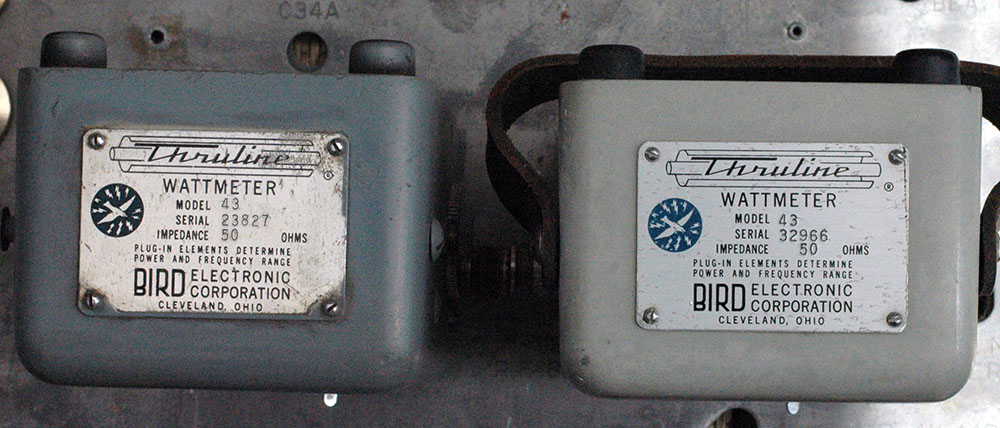|
After cleaning I tested the two
meters with the same 100 watt 100-250MHz insert. Running 100
watts into the TF1020A dummy load proved that both meters showed
exactly the same results. 100 watts forward power and a just
discernible reflected power at 145MHz.
A transmitter is designed to drive its
power into a specific load, generally 50 ohms nowadays, but in
days of old this may have been 75 ohms or indeed, for example
with marine transmitters, hundreds or even thousands of ohms.
You can generally tell from the type of output socket what the
load should be and in the case of say a Sailor
HF transmitter you will see a large porcelain insulator rather
than a coax socket. How can you measure the power from this type
of transmitter, if it's aerial impedance is a thousand ohms?
You certainly cannot readily use a Bird wattmeter. The solution
is to insert a hot-wire ammeter in series with the aerial, a
method used during WWII for transmitters using wire aerials to
help an operator get the best output from his transmitter. Another
method, which was used during WWI was to use an absorption
wavemeter. By the operator positioning the wavemeter close
to the aerial he could tune it so a small lamp lit up to maximum
brightness. If the indicated frequency or wavelength, was correct
the operator would then re-position the box somewhere convenient
(so as not to damage the bulb) and adjust the transmitter for
maximum brightness of the lamp.
The Bird Model 43 uses a sensitive microammeter
(only 30uA) to indicate forward power and its accuracy is said
to be +/-5% and insertion loss only 0.1dB. What does that dB
number mean? It sounds really low and hardly worth bothering
about, but it means you lose about 2.5Watts from your 100Watts
so it's maybe a good idea to remove the wattmeter and gain about
2.5% extra signal. Generally speaking, the cheaper your wattmeter
or SWR meter the more the loss is going to be.
Here's a rear view of the pair |











